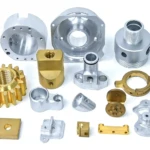Breaking the Mold: How 3D Printing Technology is Revolutionizing Pharmacy Services
In the era of personalized medicine, traditional pharmaceutical methods have come under scrutiny. As demand for tailored medication continues to rise, the traditional models have been exposed for their shortcomings. Fabrx, a British company, has pioneered a new path forward with the introduction of 3D printing technology in pharmacies. Their latest research conclusively demonstrates that 3D printing can transform the entire process of medication preparation in community pharmacies, enabling patients to access personalized prescription drugs faster, safer, and more cost-effectively.
The Drawbacks of Traditional Distribution Models
The conventional approach to dispensing medication has numerous flaws. Pharmacists must manually measure and mix raw materials, relying on basic quality control tools, which increases the risk of errors. The statistics are alarming: in the United States, drug prescription errors account for 3%, and this trend is on the rise. From 2012 to 2013, the proportion of commercial insurance members using mail-order pharmacies increased from 1.1% to 1.4%, along with an average cost jump of 130%, from $308.49 to $710.36. Moreover, the error rate in distribution pharmacies ranges from 6% to 10%, posing significant risks to patients.
The Fabrx 3D Printing Solution
Fabrx’s M3Dimaker 1 Pharmaceutical Printer is changing the game. This innovative device employs semi-solid extrusion (SSE) additive manufacturing technology to fill ink capsules with semi-solid mixtures, mitigating issues with air pollution and inconsistency inherent in traditional powder compounding. The automated system significantly reduces labor and production costs, lowering the cost of 2.5 mg dose capsules by 35% and 5 mg doses by 20%. What’s more, production time is reduced by 10%, alleviating pressure on pharmacies and staff.
The printer incorporates an advanced quality control system, monitoring capsule weight, drug distribution, and real-time dosing to guarantee consistent product quality. The equipment features an integrated system that weighs capsules individually, and a pressure sensor detects blockages or inconsistencies, ensuring the safety of drugs and eliminating potential errors.
Practical Applications and Future Prospects
A field test in a Madrid community pharmacy saw nine patients using 3D-printed minoxidil capsules, which met European pharmacopoeia standards for mass uniformity, drug content, and dissolution rate, and remained stable for up to three months.
The potential for 3D printing technology in pharmacies is vast. Local pharmacies can quickly produce personalized drugs on-site, benefiting patients with rare conditions, children, and those requiring special dosing requirements. Hospitals can also adopt this system to prepare drugs at the bedside, providing specialized solutions for sensitive areas such as cancer treatment, pain management, and hormone therapy.
Regulatory Challenges and the Path Forward
Despite initial regulatory hurdles, the US FDA approved the first 3D-printed pill, Spriam, in 2015. The 3D-printed drug market in Germany and China is growing rapidly, with major manufacturers actively investing in related medical products. As governments increasingly comprehend the benefits of 3D-printed drugs, pharmacies will need to regularly equip medication ink cartridges to easily create personalized drugs, significantly reducing errors and becoming the standard choice for patient treatment.
In conclusion, Fabrx’s 3D printing technology has the potential to revolutionize the way we approach personalized medication. By harnessing the power of 3D printing, pharmacies can provide accurate, cost-effective, and timely treatment options for patients worldwide. It’s time for the pharmaceutical industry to adapt and leverage the latest innovations to improve patient care and safety.
















